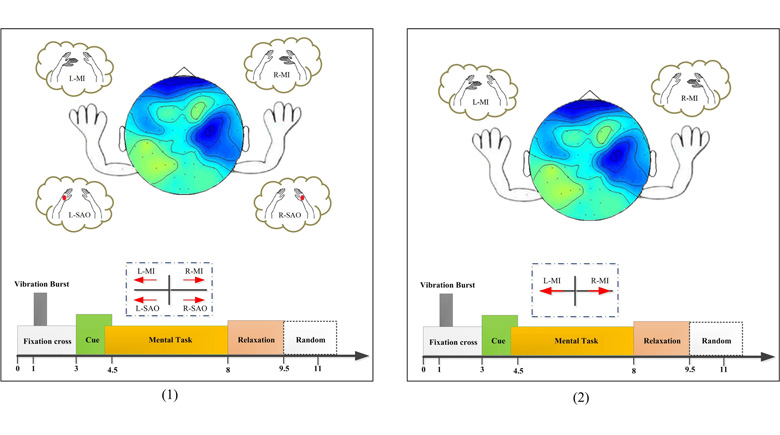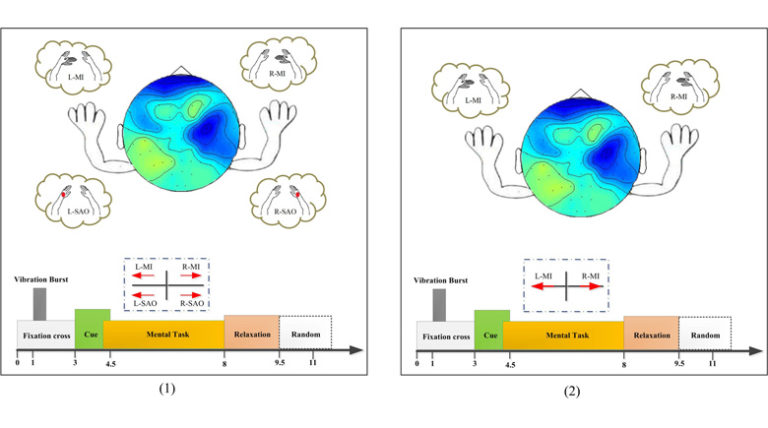
Distinctive EEG signals from the motor and somatosensory cortex are generated during mental tasks of motor imagery (MI) and somatosensory attentional orientation (SAO). In this study, we hypothesize that a combination of these two signal modalities provides improvements in BCI performance with respect to using the two methods separately, and generate novel types of multi-class BCI systems. Thirty-two subjects were randomly divided into a Control-Group and a Hybrid-Group. In the Control-Group, the subjects performed left and right hand motor imagery (i.e., L-MI and R-MI). In the Hybrid-Group, the subjects performed the four mental tasks (i.e., L-MI, R-MI, LSAO, and R-SAO). The results indicate that combining two of the tasks in a hybrid manner (such as L-SAO and R-MI), resulted in a significantly greater classification accuracy than when using two MI tasks. The hybrid modality reached 86.1% classification accuracy on average, with a 7.70% increase with respect to MI (P < 0:01), and 7.21% to SAO (P < 0:01) alone. Moreover, all 16 subjects in the hybrid modality reached at least 70% accuracy, which is considered the threshold for BCI illiteracy. In addition to the two-class results, the classification accuracy was 68.1% and 54.1% for the 3-class and 4-class hybrid BCI. Combining the induced brain signals from motor and somatosensory cortex, the proposed stimulus-independent hybrid BCI has shown improved performance with respect to individual modalities, reducing the portion of BCI-illiterate subjects, and provided novel types of multi-class BCIs.

